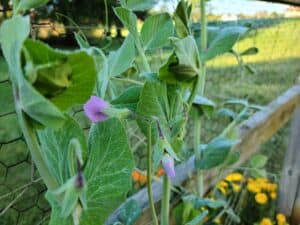
By Jennifer Fairfield
Well, as usual, here we are in October, and I have absolutely no idea where the summer went.
I vaguely remember getting some vegetables from my garden this year – though it was definitely not my best garden year because of all the rain that led to all kinds of diseases.
I do still have some things producing – especially kale, which seems to be oblivious to everything except hungry caterpillars and slugs. Some of my herbs are still going strong, too and will likely continue to do so until we get some really cold weather.
I am holding out hope that the late peas I planted (probably a little too late) may yet have time to produce, and I put in some very late cabbage, thinking I might get lucky with those, as well. Audrey Hepburn once said, “To plant a garden is to believe in tomorrow.” These late plantings are my inner optimist showing.
We should make the best of the weather we are getting now, since we are all but guaranteed to get light frosts by mid-month and killing frosts by the end of the month. Even with those chilling thoughts, there’s still much we can do in our yards and gardens this month.
In fact, October is one of my favorite times to be outside working, as the weather tends to be so much more to my liking than the heat of summer.
Vegetable Garden:
Keep protective fleece row covers handy if you still have things growing in your garden, and want to keep the frosts – we will definitely see at some point this month — from ending their growing days before you are ready for them to be over.
Some crops, such as kale, cabbage, and broccoli can take a bit of cold, but most will not survive frost, especially when the temperature dips below 28°.
If you still have any warm-weather produce in your garden, lucky you. Be sure to harvest it early in the month. Take advantage of the cooler weather to do some canning and freezing of the last of your garden’s bounty, while it’s not too hot to want to have the stove turned on.
Plant garlic after we’ve had some really good frosts, and the soil has cooled down.
We got garlic bulbs in at The Garden Mill a couple of weeks ago, and it looks great (which explains why it’s going so fast). While there are over 500 distinct garlic varieties in the world, we only have 5 varieties available at the store – ranging from mild to spicy in flavor. Get yours before they run out, but again, wait until we have gotten some good frosts to plant them.
Fall-planted garlic generally grows best in our climate – producing larger heads and cloves than garlic planted in the summer. For more information on planting and growing garlic, check out this article from the University of Minnesota Extension Service.
Once your plants have stopped producing, clean out the garden.
Do this early to mid-month so you’re not out in the freezing temperatures (or surprise early snow) at the end of the month, wishing you had done it sooner.
Bag up and toss in the trash any plants with any signs of disease. Composting diseased plants is not a good idea, as winter composting temperatures around here are generally not high enough to kill off disease, and since you’re going to want to use that compost in your gardens next spring, you don’t want to just be re-introducing those diseases.
When you’re all done for the season, don’t forget to clean your tools before putting them away (I’ll admit that I sometimes forget, which explains the rust on my pruning saw).
Doing so will help your tools last longer and make them work better for you. Fine Gardening recommends cleaning and sharpening them regularly, throughout the season. If you only remember to do it once though, the best time is at the end of the season, so they don’t spend the entire winter covered in moist dirt, which can promote rust.
Part two will publish tomorrow.













